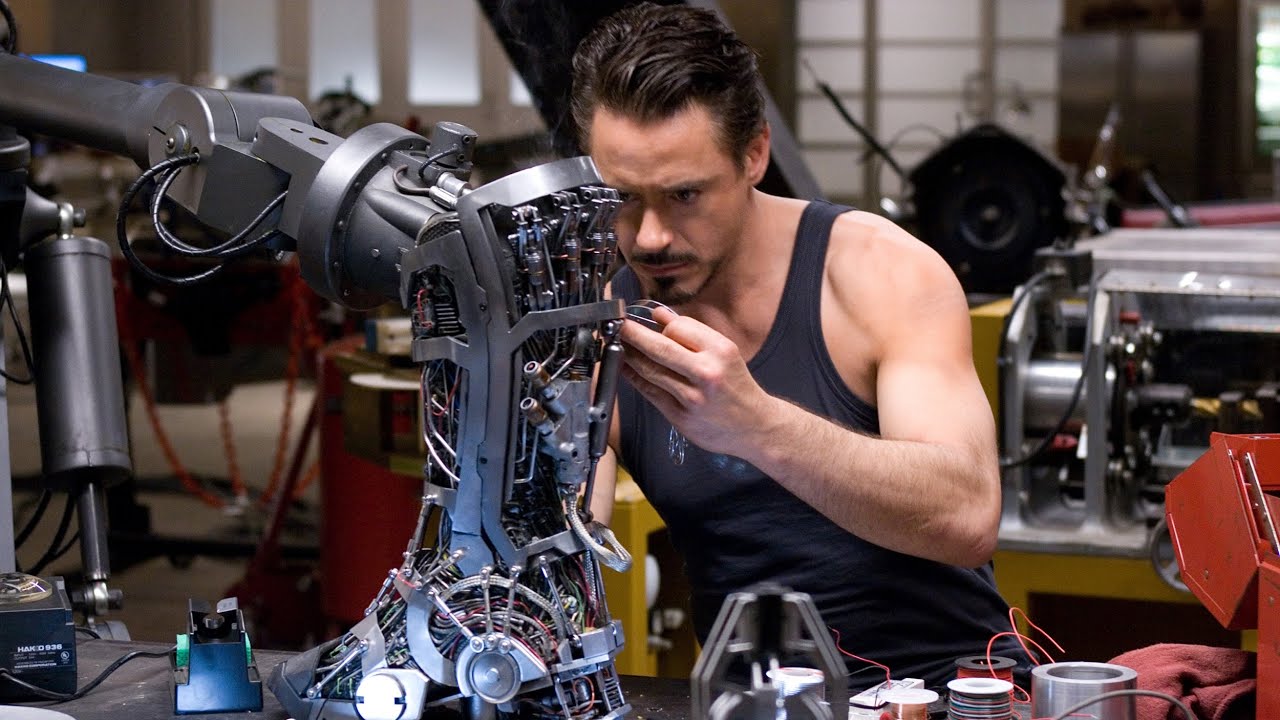Robert Downey, Jr. in Iron Man (2008)
The United Nations Council on Trade and Development reports that 40% of the world’s jobs will be “impacted” by AI over the next several years. What will that impact look like? What should that impact look like?
AI is not a thing out there in the world that is happening to us. We technologists get to decide how AI should work and how it should work with us. The decisions we make about the products we build, the products we buy, and the products we use shape what AI will be. We are the ones building it—not the other way around.
What AI should we build? I believe we are obligated to guide AI towards an outcome that benefits humanity.
Fortunately, AI that’s good for humans is also what works best for the AI technology we have.
Benefiting humanity
We hear all the time about many potential dangers of artificial intelligence. It will flood the internet with spam, it will erode copyright, it will make replicating swarms of hackers, or it will gain control of a nuclear arsenal.

I think generative AI has caused a little bit more spam and probably removed some income from commission artists. The rest of these risks haven’t happened yet, and I believe they are unlikely to big factors. On the other hand, a very real and large danger of AI is that it will significantly displace the labor force.
Every technology improvement throughout history has been a positive one if you look at a long-enough time horizon. But in the short term, rapid technological advancement negatively impacts huge numbers of people. This could easily happen with generative AI. Even if we discover new jobs and we demand even more goods and services, AI replacing workers would harm hundreds of millions of people. This would be catastrophic to their lives and the entire world economy.
My personal mission is to guide Artificial Intelligence towards assisting workers, not replacing them. It is true that in the long run, productivity gains through making workers more effective is equivalent to replacing workers. However, for any individual worker, the only thing that matters is whether they are replaced or not. If increased productivity is closely matched by increased demand, no one at all needs to be displaced by AI. Let’s consider a hypothetical next few years.
A hypothetical scenario
Let’s assume that productivity gains from AI will top out at 50% in the next 5 years. For simplicity’s sake, we’ll say it is linear growth of 10% per year. Meanwhile, let’s take an optimistic view that demand for new goods and services increases nearly as much: 45%.

The ideal result is that only 5% of the workforce gets displaced, which is the difference between increased productivity and increased demand in our scenario. 5% of an industry over 5 years is slower than the 3% annual decline of United States manufacturing in the aughts. We could manage that impact. This ideal result in the scenario only comes true if AI is assisting users, however.
Consider if we instead have AI that is built and sold to replace certain workers, with the same resulting productivity growth for companies. Instead of making 100% of workers 10% more productive, AI could replace the bottom 5% of workers. Every one of those workers is now displaced. If AI can do 5% of jobs but at infinite scale, AI will pick up all the demand growth. After five years, 25% of workers would be displaced, much worse than the US manufacturing decline.
Fortunately, AI is better at assisting workers than replacing workers.
Human in the loop
AI works best when a human is directly in control of any actions it takes. These are important enough that we have a term to describe the methodology, Human In The Loop (HITL). There are three reasons for this: catching hallucinations, having a decision-maker, and needing context of an individual worker.
Talking about the problem of hallucinations is almost as popular as talking about AI itself. Hallucination is starting to become very rare, but that’s not good enough. We are only going to trust the decisions of AI when we can either understand it or it is absolutely perfect. Just like self-driving cars, simply being slightly better at not-crashing than humans isn’t good enough. AI must be dramatically better than humans before we will let it make decisions for us. LLMs aren’t there yet, and they may never be.
It is hard to make decisions; wouldn’t it be nice if computers did it for us? That’s not going to work in the world where we need someone to accept the praise for success, and more importantly, to take the fall for failure. Real employees need to take accountability, not virtual ones. There are too many decisions that need someone to be accountable.
Managers can take accountability and perhaps manage hallucination, but a manager with an AI can never be as good as their employee with an AI. Just as human translators have the necessary context to best direct AI, any individual knowledge worker’s brain is full of context on what their job is. They can use that knowledge to better guide an AI for maximum impact.
AI is simply better when there is a human in the loop.
Assist, not replace
We see time and again that a human with an AI is more effective than an AI alone:
- The demand for human translators is actually going up, as expert translators are the best users of machine translation
- The best memes are created by human and AI teams, vs. humans alone or AI alone
- An important study in 2023 found customer service representatives with AI assistance closed more cases and had fewer Karens demanding a manager
- Model-training itself relies on human feedback or human judgment to guide post-training
- A study in Nature Medicine found that doctors with AI assistance can better diagnose breast cancer
- GitHub has found that programmers using GitHub Copilot are much more efficient and productive at tasks that AI cannot solve
We are starting to see the first studies based on using GPT-4 and newer models, which is when they started becoming useful for many tasks. This trend is going to continue, as long as we continue to build the right way.
The world we will build
We can form AI to be benefit humanity. We don’t even have to be altruistic to do it. When we build products to have a human in the loop, we make a better product and steer the economy to remain on a good path. Human In The Loop provides a decision-maker while also resulting in more efficient and higher quality output.
Some key ways to keep a HITL is to train rank-and-file employees how to use AI and encourage them to share what they’ve learned. When building new features, keep the user in direct control of any important decisions or actions. Keep full visibility and transparency into how the AI has come to an answer. Sell AI features based on the value they will create to individuals, making them both more productive for the company and also happier.
AI should be built to accelerate and amplify human ability. As technologists, our duty is to build a world where workers, shareholders, and the general public alike benefit from generative AI. AI’s potential to help the world is astounding; let’s keep humans at the center of it.






